How much attention do you pay to your windshield when you’re zipping down the M40 on your way to work? Probably not a lot – most of us are too busy watching what’s happening on the road in front of us. Next time you go on a long car journey, keep an eye out and see if you notice one of the biggest signs that Britain’s insects are in decline: the lack of squashed bugs on the glass. When I was a kid, we used to take long journeys down to Cornwall a few times a year. I remember, distinctly, the mess of bugs splattered on the glass. In fact, even a shorter journey would result in a filthy windscreen and a lot of complaining from my Dad. The lack of bugs isn’t something I noticed until I read about it online – and once I had noticed, I couldn’t stop noticing.
Of course, squashing bugs with your car isn’t a good thing, but this realisation – called The Windscreen Phenomenon (and, yes, that’s what entomologists call it) – is just one small indicator that Britain’s bugs are in trouble. In the UK, insects are currently struggling to survive (as are lots of animals, plants and birds) against increased urbanisation, use of stronger pesticides in farms and gardens and the ongoing effects of climate change. The State of Nature Report suggested a 59% decline in insects in the UK since the 70s, but how many of us noticed, and how many of us cared?
Often, insects and invertebrate have a bad reputation with the general public as people dismiss them for being ugly, boring or scary. Endangered mammals like dormice are popular thanks to their cuteness, and at-risk birds like the cuckoo are iconic and enduring. People often dismiss British insects for their more exciting overseas cousins – huge iridescent beetles in Africa or giant spiders in Australia. Aside from butterflies and (occasionally) bees, bugs in the UK just don’t get the best press when compared to their cuddly counterparts.
When you think of British bugs, you probably imagine the humble ladybird or the friendly bumble bee. Some of us might immediately think of the not-so-fearsome house spider or the spindly daddy long legs with his long, wispy limbs. What a lot of people don’t realise is that the UK is host to a whole range of exciting and interesting insects and invertebrate hiding right under our feet! We’ve put together a list of some interesting and unusual British bugs to demonstrate how diverse these creatures can be.
Warning: If you don’t like insects and spiders, you might not want to continue scrolling!
The Ladybird Spider
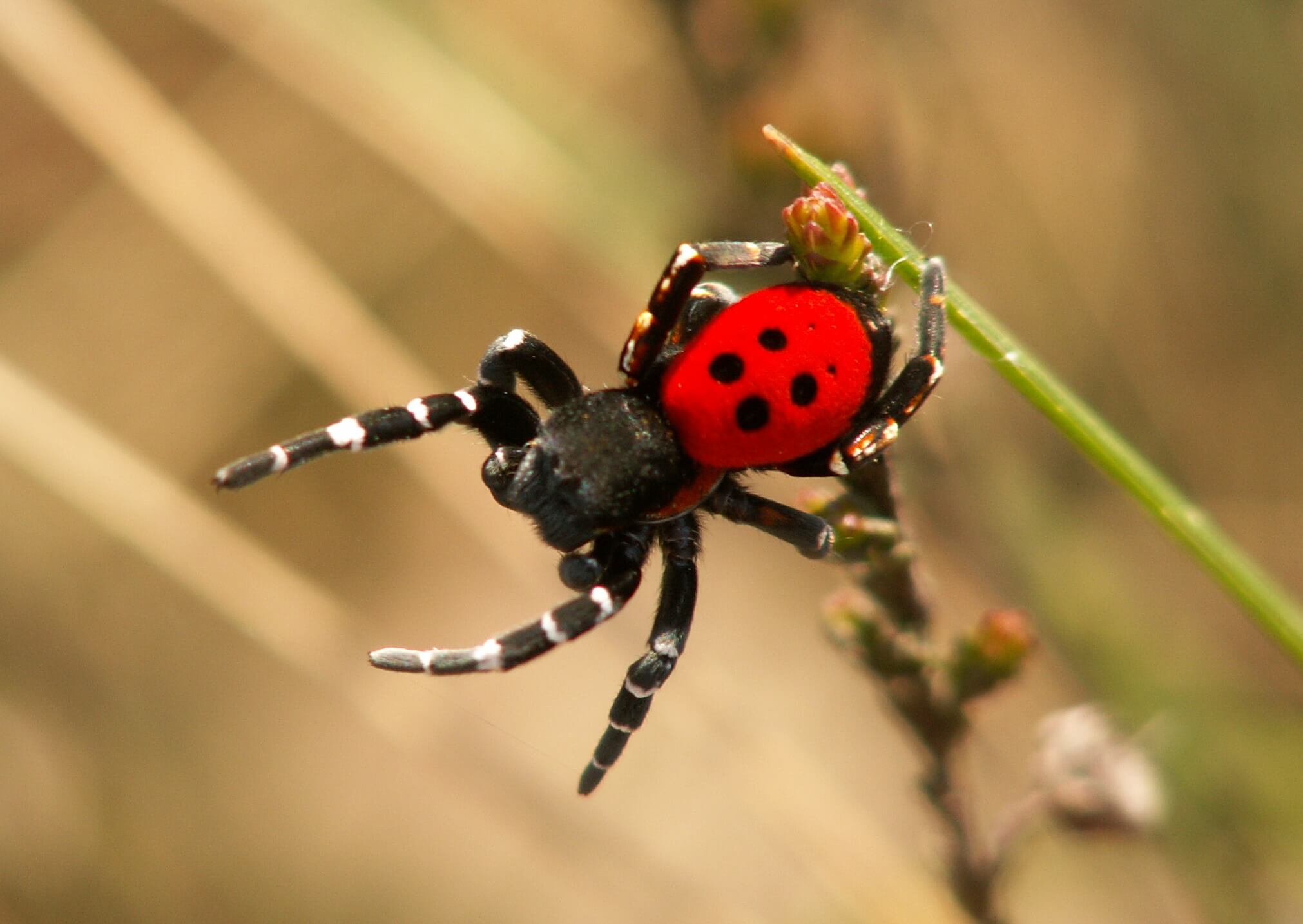
This tiny, brightly-coloured spider was thought to be completely extinct in the UK until a small population was found in Dorset in the 1980s. Female ladybird spiders can reach up to 16mm long and the males only 9mm, the males boasting distinctive red and black colouring which gives them their adorable-sounding name. It’s easy to see why this little spider could be confused for the more common ladybird with its striking red abdomen and dark black spots. After a push to support dwindling Ladybird Spider numbers in Dorset, there are now eight wild populations in the heathlands, but in order to really keep it safe at least 20 populations need to be established.
The Lobster Moth
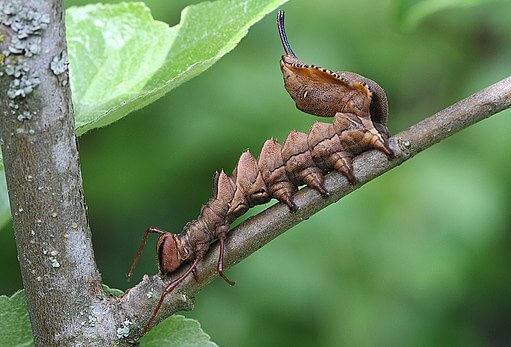
The Lobster Moth is an interesting addition to this list because the moth itself is particularly interesting – while being significantly fluffier than a standard house moth, its mottled grey form isn’t going to catch anyone’s eye. The caterpillar, however, is probably the most unusual bug you’re likely to come across in the UK. With a round, alien-like head, a large ‘tail’ and long legs, it looks very similar to the crustacean from which it gets its name. As it matures, it develops “bumps” along its body and darkens, resembling a dead leaf, which makes it quite hard to spot in the wild. These unusual creatures are found all over Europe but in the UK are mostly found in Southern woodlands.
Stag Beetles
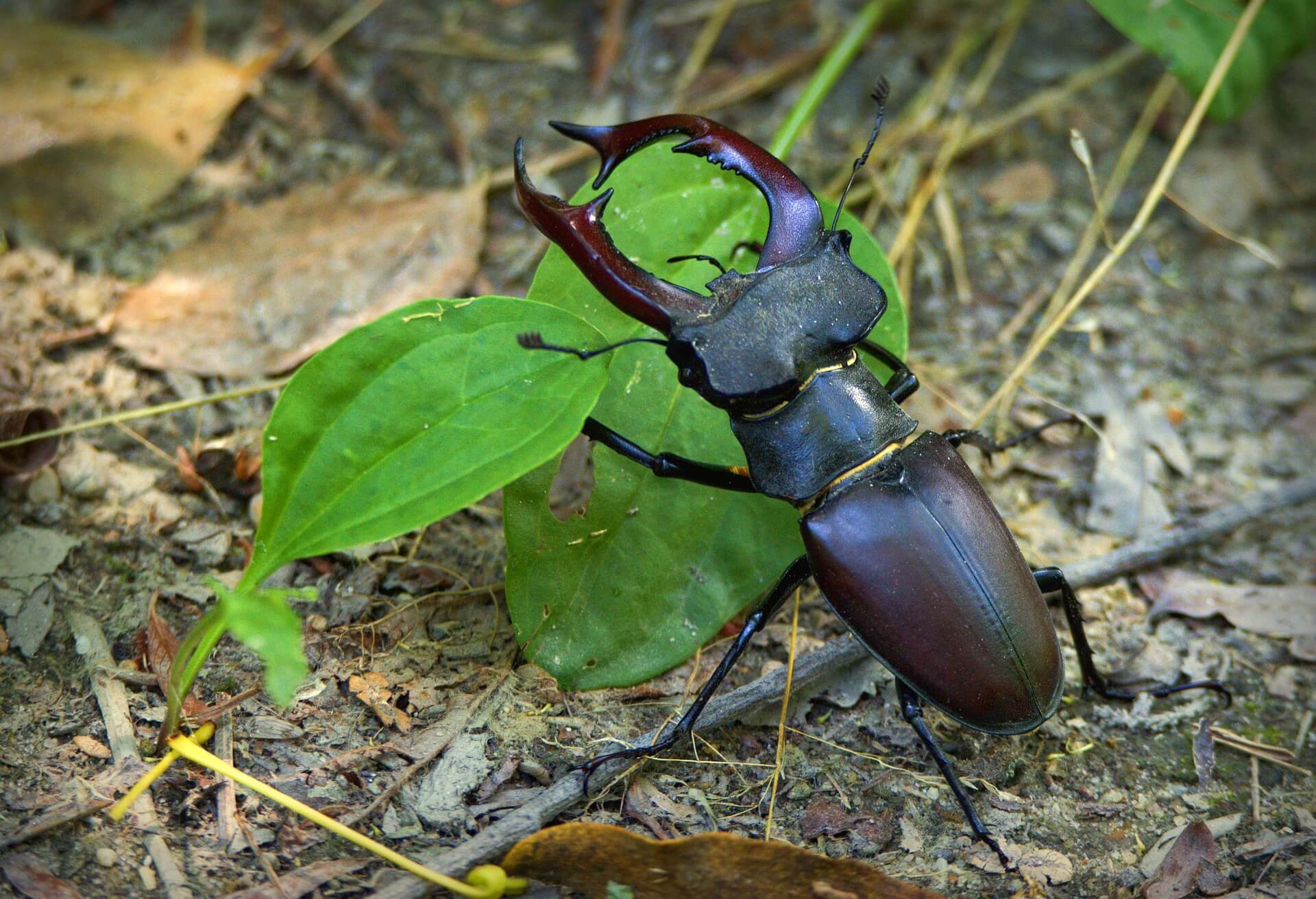
Stag beetles are probably one of the most famous beetles in the world, known for their fierce looking pincers, dark wing-cases and long legs. You’ve probably seen stag beetles on TV or maybe at a zoo or animal park and they get their name from their distinctive, antler-like mandibles. In Japan, these beetles are often popular pets and can be found in pet shops and even department stores! It might surprise you to learn, then, that these impressive beetles are actually a native UK species. Often seen flying around at dusk in the summer months as they search for a mate, these giant insects prefer warmer temperatures and low rainfall so are most common in the south, but can be found all over the country.
Stag beetles can spend a staggering seven years in their larval form hidden deep underground or amongst rotting wood before eventually emerging as an adult to mate. Despite their sharp-looking mandibles, Stag Beetles are not harmful and the adults cannot eat solid food, instead drinking sap. Stag Beetles are currently one of Britain’s rarest beetles due to the devastating effect of deforestation as there simply isn’t enough rotting wood for larvae to hatch in and feed on. If you’ve seen a stag beetle in the wild, please take part in the People’s Trust for Endangered Species survey to help researchers track wild populations in the UK.
Elephant Hawk Moth
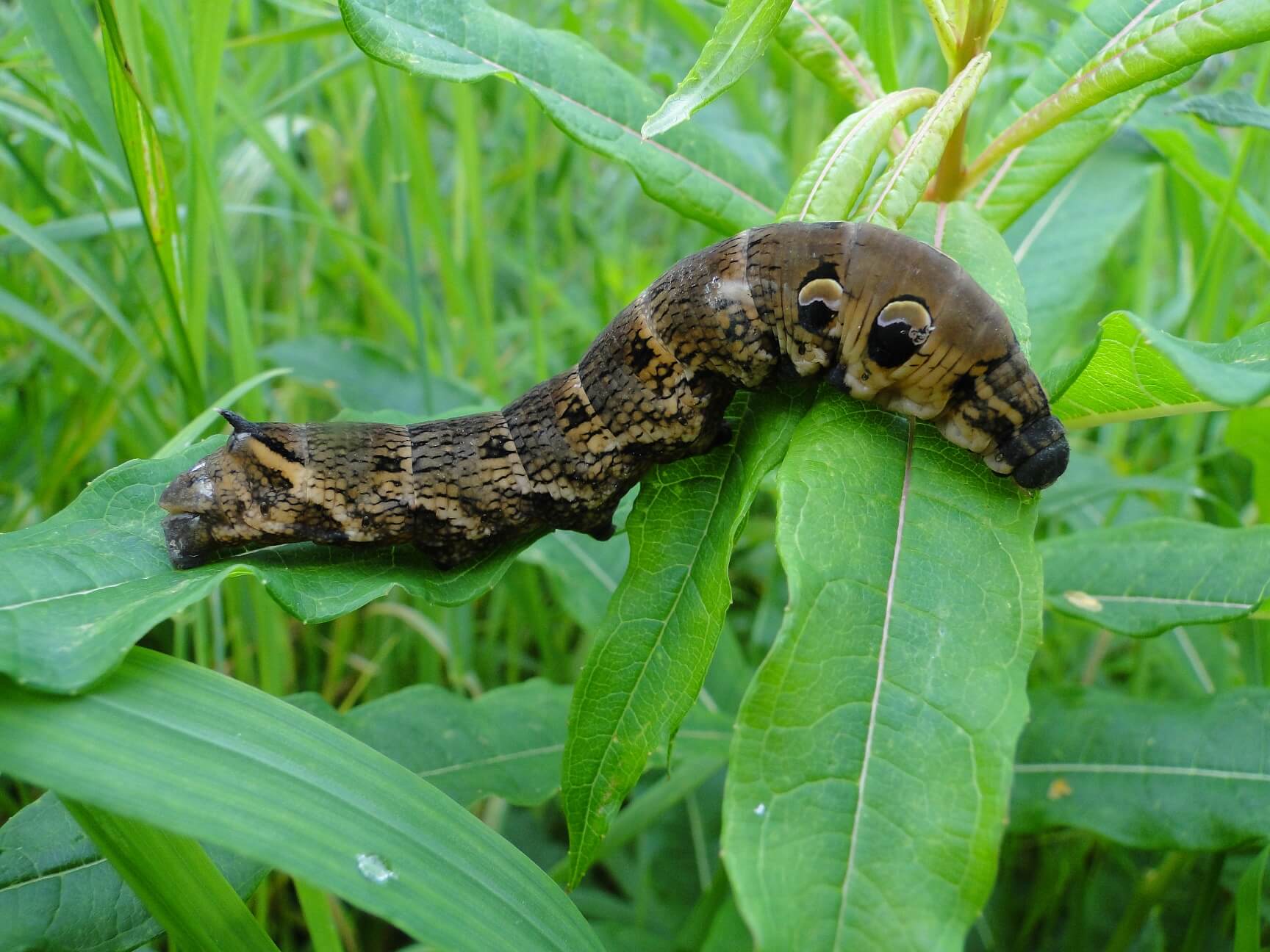
Unlike the Lobster Moth, the Elephant Hawk Moth is a fascinating caterpillar and a truly striking adult as well. You might have seen the caterpillars making their way across your garden – in fact, at a whopping 85mm long they’re very hard to miss. These giant caterpillars are really a sight to behold, and when you see one of them slowly making its way across your deck you’d be forgiven for assuming that a Pokémon had just appeared in your garden as it looks up at you with those big eyes. In fact, those “eyes” are a clever kind of camouflage, and the round “head” is a decoy which conceals a much smaller head which extends outwards as the caterpillar searches for food. When it feels threatened, the caterpillar retracts its real head, expanding the decoy head to make the “eyes” look bigger and scaring away potential predators as the tasty caterpillar appears to transform into a much less tasty snake.
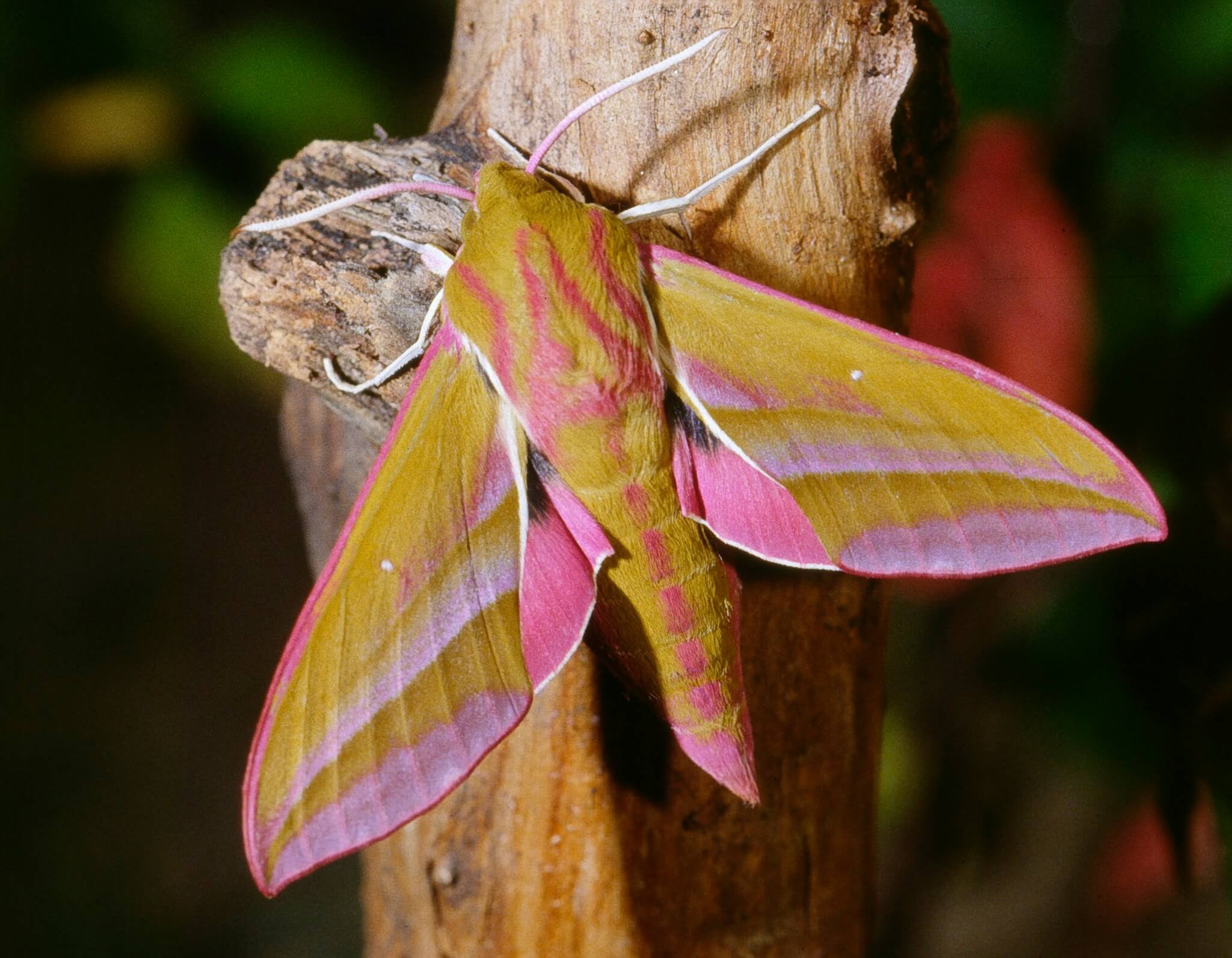
When fully grown, the caterpillar pupates and transforms into a beautiful Elephant Hawk Moth, a striking insect with bright olive and pink wings. Their 60mm wingspan makes them larger than your standard British moth and they tend to eat tubular flowers such as honeysuckle. These moths are common across all of the British Isles and can occupy all kinds of habitats, so unlike a lot of insects on this list they aren’t endangered at all.
Rosemary Beetle & Tansy Beetle
In the UK, we often imagine our beetles to be drab little things with dark brown or black cases in matte shades. In fact, we’ve got a wide array of gorgeous shimmery beetles right under our noses – so many that we’ve had to pick just two to write about.
Rosemary Beetle
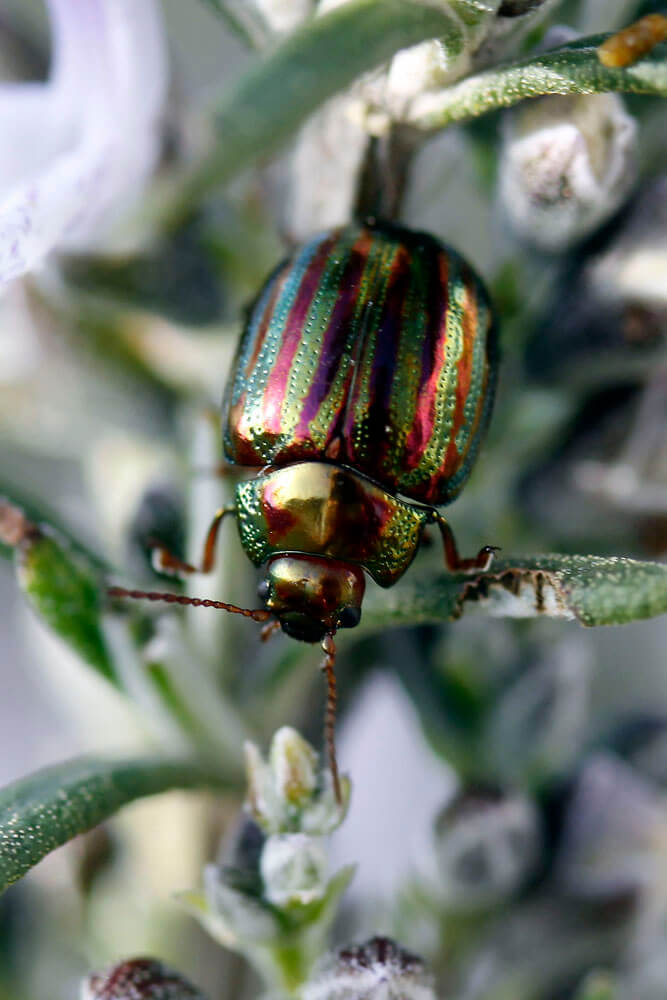
These striking beetles are a relatively new species to the UK, and were first discovered wild in 1994. Found mostly in the South-East, these little shiny bugs are drawn to aromatic plants and herbs like lavender, sage, and of course rosemary. Quickly earning themselves the label of “pests”, Rosemary beetles are particularly hardy and are often unaffected by pesticides, much to the chagrin of gardeners. While these beetles are only around 7mm long, their shiny, striped cases make them easy to spot nestled among the pastel purple lavender.
Tansy Beetle
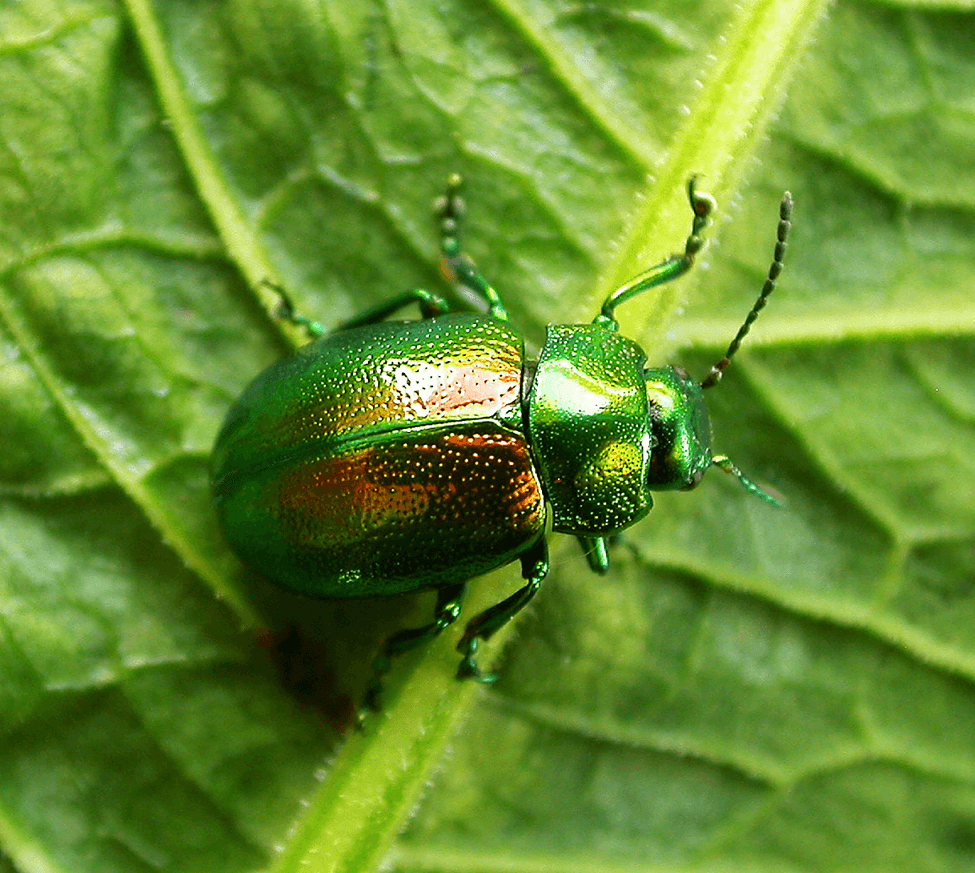
These iridescent beetles were once widespread across the UK, but today are one of our most endangered insects. In fact, they’re so rare that they are currently only found on a stretch of the banks of the River Ouse around York. Despite their limited spread, in 2016 the number of recorded Tansy Beetles nearly doubled, showing that there might be hope for these bugs yet. Tansy Beetles are famous for the popular myth that their dazzling cases were so attractive to the Victorians that they were used for jewellery and fashion, attached to collars in place of sequins. While it’s hard to tell just how true this myth is, it’s a known fact that actress Ellen Terry wore a gown adorned with individual beetle cases in the 1880s during a production of Macbeth, so beetles certainly played a part in fashion at the time.
Cockchafers
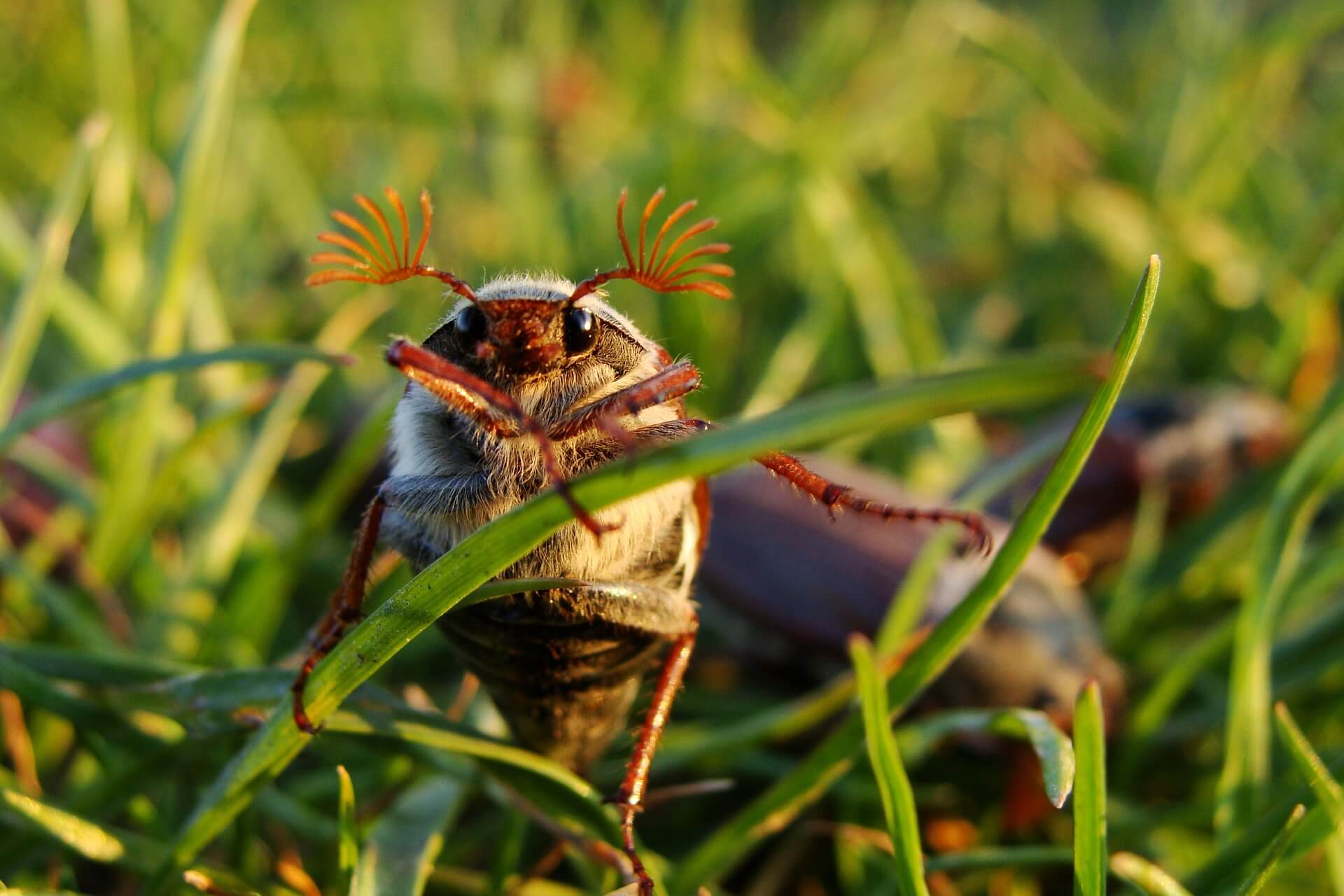
Depending on where you live in the UK, these scarab-style bugs are either a regular pest or a complete mystery. They’re known by a number of names across the country: Doodlebugs, Maybugs or Cockchafers (stop giggling at the back, there). Once, these bugs were widespread: in 1911 in an only 18km2 area of forest, over 20 million Cockchafers were collected. These bugs had a devastating effect on harvest as there was no effective way of stopping them. In one bizarre tale from 1320 England, Cockchafers were brought into a courtroom where they were ordered to withdraw their presence within three days or risk being outlawed. The bugs, of course, failed to comply with this sentence so were consequently collected and killed en mass.
After modern farming techniques became popular and the invention of chemical pesticides, Cockchafer numbers finally began to fall, which saved the crops but brought the insects to near-extinction. In the recent move away from chemical pesticides, Cockchafers once again are slowly increasing in numbers.
These bizarre-looking bugs are known for the “leaves” which adorn their antennae; males have seven and females six. They measure about 30mm which doesn’t make them the smallest bug on our list – but does make them the scariest when they decide to fly at you.
Protecting British Bugs
So what can we do to look after our British bugs? Allowing a patch of long grass in your garden is a good start, as well as encouraging the growth of wildflowers or flowers which attract insects such as lavender, foxglove or honeysuckle. For the more dedicated, you can install a bug barn to give insects a place to eat, rest and breed or a bee hive for solitary bees to help support pollinators. For gardens with children, bug hotels are a great way to help support the bugs in your garden while teaching children about all the creepy crawlies they may find. Generally, a bug hotel is built around a base of recycled wooden pallets and can then be filled with all kinds of materials: old wood, hay, bamboo or even sand and old planters. The diverse materials will tempt a wider array of weird and wonderful minibeasts to your garden, perfect for budding entomologists.
–
Lotti works with the Primrose Product Loading team, creating product descriptions and newsletter headers.
When not writing, Lotti enjoys watching (and over-analyzing) indie movies with a pint from the local craft brewery or cosplaying at London Comic Con.
Lotti is learning to roller skate, with limited success.